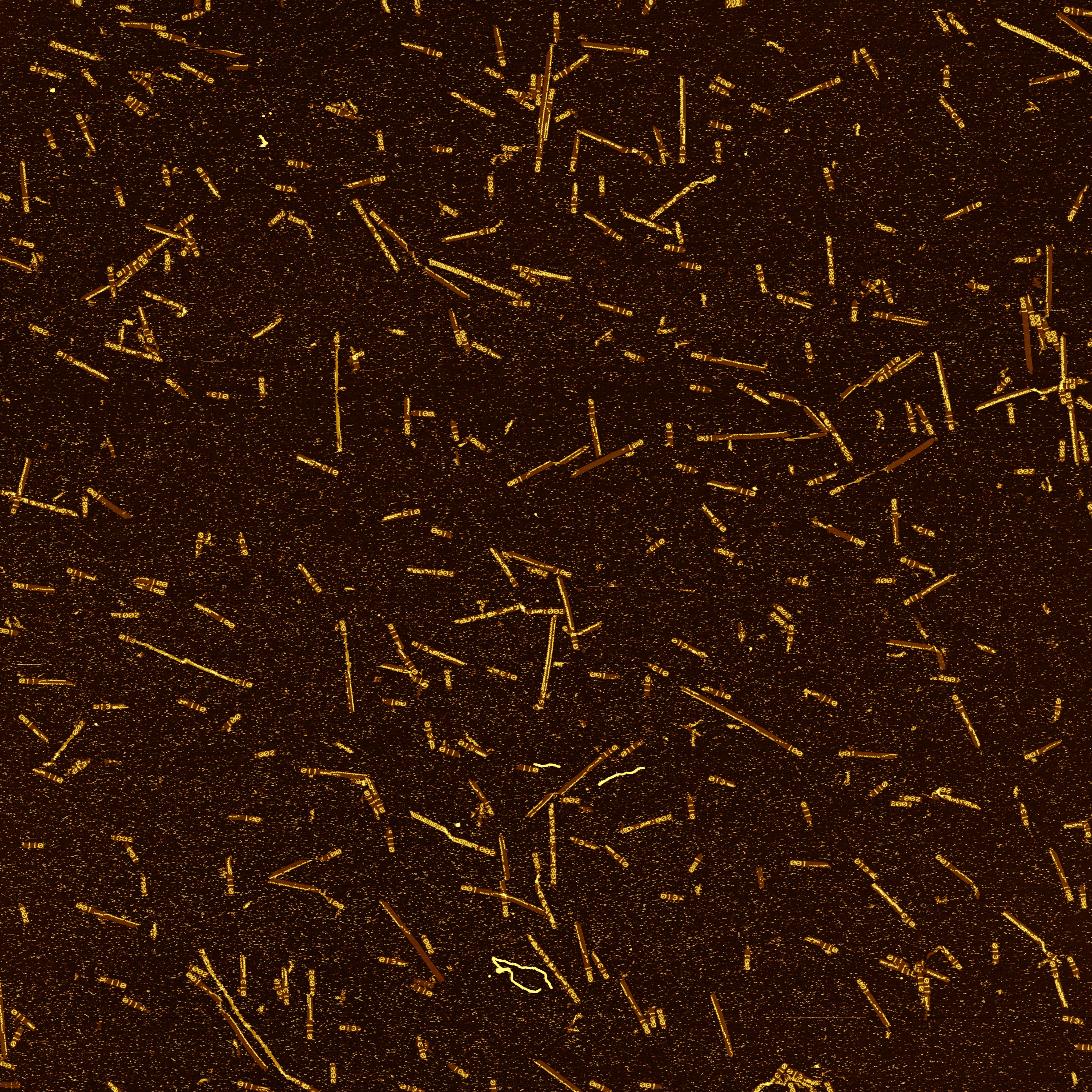| Curator: That's sort of what this DNA computer does. It's one set of molecules, but if you program it by selecting and using just some of the molecules and not others, it will self-assemble in different ways. |
| Computer Engineer: Cool! So I can program them to make a molecular ball one day, and a molecular cube the next day, and so on? |
| Curator: No, they always self-assemble as tubes. |
| Tycoon: Oh. And what's the good of that? |
| Curator: Well, like I said, the people who built it say that it's useless. |
| Poet: (who for some time has been wandering around distractedly) Hey guys, take a look at this display! See all those little things? They've got numbers at one end, and then some pattern going off toward the other end? Zig-zags, bubbles, stripes! |
| Farmer: The one over here has patterns that look like a chain of smoke clouds puffing out of an old steam locomotive. And that one, hey, it reminds me of the drumlins near where I grew up! |
| Mathematician: What are drumlins? |
| Farmer: Oh, they're a kind of rolling hill formation. Lots of them in County Monaghan, Ireland. |
| Poet: (sighing) It's like a field of flowers, every one different... |
| Curator: Those are the algorithmic crystals that the DNA computer made. The different patterns are made by different algorithms with different inputs. The computer marks each one with a 3-digit barcode that indicates which input it used and what algorithm it ran. |
| Poet: ...a field of algorithmic flowers... |
